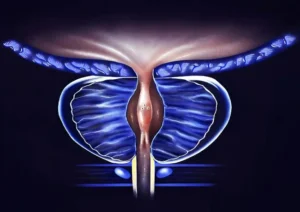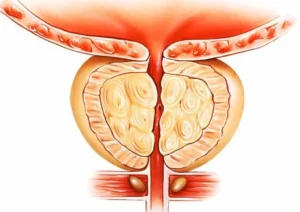Getting to Know Prostatitis:
What It Is, How It Feels, and What You Can Do About It
What’s Prostatitis All About?
Prostatitis is when your prostate, a small gland about the size of a walnut that helps make seminal fluid, gets inflamed.
This can lead to painful urination, some discomfort in the pelvic area, or even flu-like symptoms.
It can affect guys of all ages but is seen more in those under 50.
There are four main kinds of prostatitis:
- Acute bacterial prostatitis – This one hits hard and fast, caused by a bacterial infection with pretty strong symptoms.
- Chronic bacterial prostatitis – This involves recurring infections but with milder symptoms.
- Chronic prostatitis/chronic pelvic pain syndrome (CP/CPPS) – The most common one where there’s no obvious infection.
- Asymptomatic inflammatory prostatitis – This means there’s inflammation but no symptoms, often discovered during fertility checks.
How Do You Know If You Have Prostatitis?
The symptoms can vary based on the type, but you might notice:
- Painful or burning urination
- Having to pee a lot, especially at night
- Pain in the pelvic area, lower back, or around the genitals
- Trouble peeing or a weak flow
- Blood in your urine or semen
- Fever and chills in more severe cases
- Painful ejaculation
What Causes Prostatitis and Who’s at Risk?

Prostatitis can happen for a few reasons:
- Bacterial infections – These can come through the urinary tract.
- Nerve damage – Injury or surgery in the pelvic area can lead to this.
- Immune system issues – Disorders that cause autoimmune reactions might be a factor.
- Stress and muscle tension – These can contribute to CP/CPPS.
Here are some risk factors that could increase your chances:
- Having a history of urinary tract infections (UTIs)
- Using a catheter or having undergone urinary procedures
- Being HIV positive or having a weakened immune system
- Getting pelvic injuries
How Do Doctors Diagnose Prostatitis?
To figure out if you have prostatitis, doctors will typically take these steps:
- Review your medical history and do a physical exam, including a digital rectal exam.
- Conduct urine tests to check for bacteria or white blood cells.
- Run some blood tests to check your PSA levels, even though high PSA doesn’t always mean prostatitis.
- Use imaging tests like ultrasound or MRI for more severe cases.
- Do a post-prostatic massage urine test to find any infection.
Treatment Options Available
1. Medications
- Antibiotics (for bacterial prostatitis) – Usually taken for 2 to 6 weeks.
- Alpha-blockers – These help relax bladder muscles for better urine flow.
- Anti-inflammatory drugs – These can ease pain and reduce swelling.
- Pain relievers – Nonsteroidal anti-inflammatory drugs (NSAIDs) like ibuprofen work here.
2. Lifestyle & Home Remedies
- Warm baths (sitz baths) – These can help relieve pelvic pain.
- Staying hydrated – It helps to flush out bacteria.
- Avoiding irritants – Cut back on caffeine, alcohol, and spicy foods.
- Pelvic floor therapy – This can be beneficial for CP/CPPS.
3. Alternative Therapies

- Acupuncture – Some say it may reduce chronic pain.
- Quercetin and bee pollen extracts – Some studies hint they could be helpful.
Tips to Prevent Prostatitis
- Drink plenty of water.
- Practice safe sex to steer clear of infections.
- Manage stress and get regular exercise.
- Avoid sitting for too long; a cushion can help if needed.
When Should You See a Doctor?
You should definitely get medical help if you’re experiencing:
- Severe pain or can’t urinate
- Blood in your urine
- A high fever accompanied by chills
Wrapping It Up
Prostatitis can really affect your life, but with the right diagnosis and treatment you can manage the symptoms well.
If you think you might have prostatitis, don’t hesitate to see a urologist for personalized care.
HOSTINGER HOSTING PLAN DISCOUNT CODE
